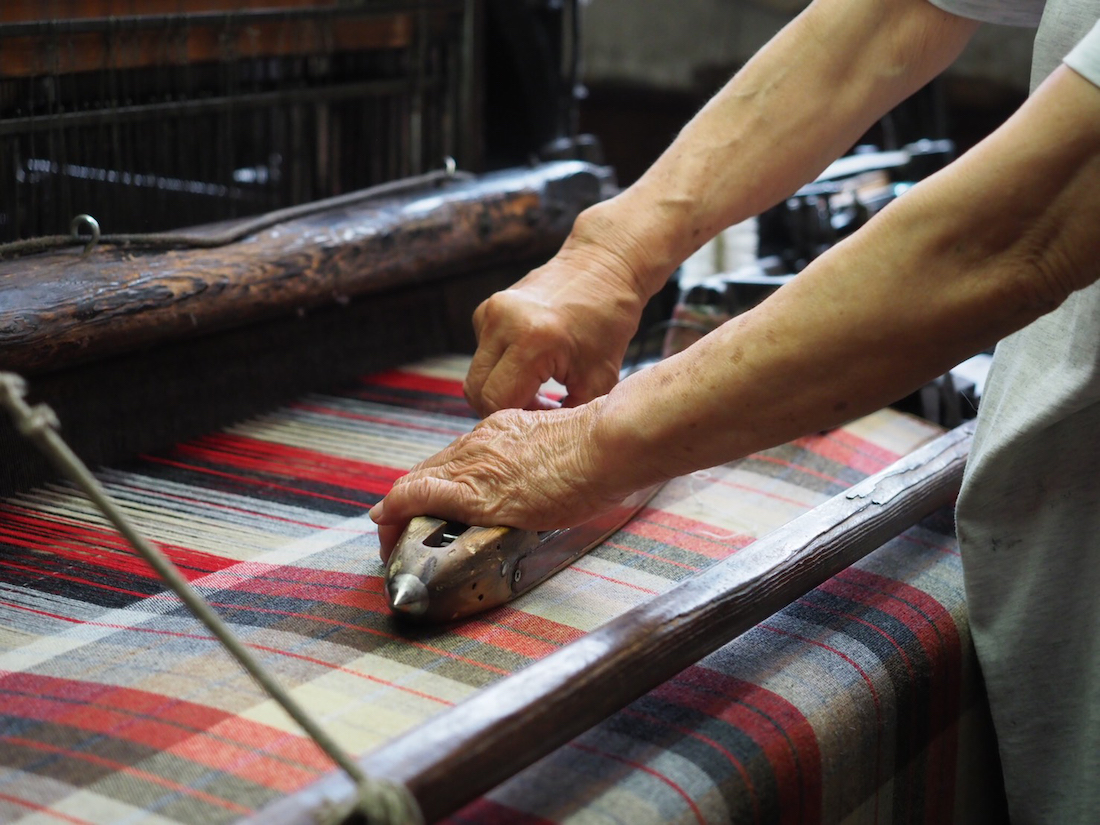At the confluence of 3 rivers in Japan’s Aichi Prefecture, there is a famous district referred to as Bishu. For generations, some of Japan’s best textiles have been woven there. Wool is a unique specialty. Rows of textile mills line the waterways, arranged in a jagged, sawtooth-like composition so that sun can pour in through skylights at selected details of the working day allowing the weavers the fantastic light-weight to inspect their craft. After the area created mostly cotton. When the desire for wool enhanced in WWI, that fiber assumed major billing.
The weavers of Bishu have a knack not just for making entire world-class wool materials, but for reusing wool fibers. Wool was really hard to occur by in Japan hundreds of decades back, so specialist weavers would refashion the wool into new fibers when a garment had turn out to be weakened or normally arrived at its conclude of daily life. Identified as “regenerative wool” today, the exercise requires sorting by particular person parts of wool material and deciding on the very best bits to be woven into fully new yards of content.

A Learn of Bishu at operate.
Regenerative wool is the centerpiece of a new apparel corporation, Beringia, that launched final thirty day period. If you have used considerably time in snowy Hokkaido, Japan, you’ve probably viewed technical clothing from Teton Bros., a line of ski equipment intended with an eye toward minimalist aesthetics and impeccable top quality. The founder, Nori Suzuki, has teamed with Montana-dependent wool-lover Robert “Bernie” Bernthal, who co-founded the wool brand Duckworth, to build Beringia.
The notion is equivalent to what Teton Bros. delivers to Japan: minimalist aesthetic built merely for performance. Significantly of what Beringia will make is tailor-made for backcountry skiers in deep powder. Available pockets, no-fuss models, just nicely-created items that operate without the need of the wearer imagining substantially about it.
Beringia would make down insulated jackets and pants and ski gear made for inclement weather, but it is that wool that has our consideration.

The Farallon shirt. More flexy than it appears.
We have been carrying the Farallon Wool Plaid shirt for more than a thirty day period now and it showcases how adaptable superior-quality wool can be. This isn’t the piece to use for a deep powder snowshoe mission to an alpine hut, or a day slashing upper body-higher powder. But we have worn it for gentle snowshoeing, all-working day drizzly hikes, even long mountain bike rides on frigid mornings. The wool breathes, the shirt moves well with remarkable arm articulation. and properly-believed-out touches like an airy upper body zipper make it far more than just a flannel shirt—it’s a legit general performance piece. That’s not anything we’re made use of to expressing when it comes to flannel button-downs.
A lot more importantly, it speaks volumes for what talented weavers can do with recycled fibers. Far more than most factors you’ll have on, the wool fibers genuinely are upcycled in a garment like the Farallon. It’s a mix of 70 p.c regenerated wool and 30 p.c synthetic fibers, and in some way you can explain to that the shirt is an improve from whichever the wool was woven into in its previous lifetime. It doesn’t necessarily really feel softer than other wools, or warmer. Just better somehow. Which it should, seriously, considering every single wool fiber in the shirt has been hand-selected.
Nobody nevertheless is aware what the outdoor industry is heading to seem like in the coming a long time as individuals of us who commit big amount of money of time taking part in in the backcountry reflect on our selections, to journey, to generate waste, to consume components. Recycled and regenerated components are clearly likely to be a massive part of that future. It makes feeling then that an apparel maker would lean seriously on a custom of reusing scarce items, like a centuries-previous reclaimed wool tradition.
